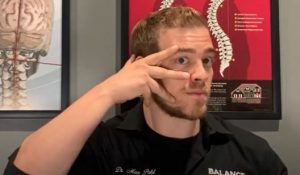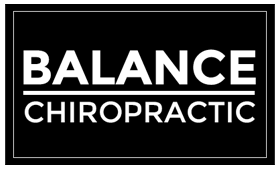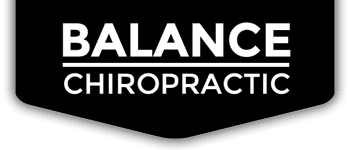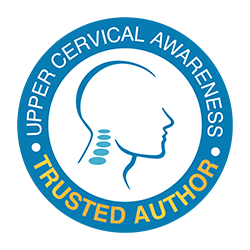Facial / Trigeminal Neuralgia in Colorado Springs CO
Living with Trigeminal Neuralgia in Colorado Springs CO is not fun.
Have you ever experienced a pain so horrifying that you questioned your will to live? Electric stabbing pain in the face and jaw may have you searching frantically for answers on google, leading you to a condition that can be so debilitating, it is also known as the suicide disease.
While this condition tends to be less common, those who have it frequently describe the level of pain as unimaginable. Many have associated it with the worst pain a human can experience and nearly 25% of sufferers will even commit suicide due to the unbearable debilitating pain. This condition is known as Trigeminal Neuralgia. Let’s dive into why this illness is so painful, why the cause may be obscure, and some promising options that may help manage or even correct the source of pain for those who suffer from it in Colorado Springs CO.
Trigeminal Nerve Anatomy in Colorado Springs CO
Thanks to this nerve we can chew food! This nerve even supplies some structures in the ear and Eustachian tube. Information is carried from this nerve to a part of the brainstem called the pons which is then relayed to the cerebral cortex of the brain for interpretation. In the case of Trigeminal Neuralgia, something irritates the nerve which triggers a nociceptor.
That receptor sends signals throughout the entire nerve pathway, into the spinal cord, and up into the brain where it is perceived as pain. Remember ever hitting your elbow in just the right spot against something? It’s always (shockingly) painful.
Trigeminal Neuralgia is a disease that attacks one of the twelve cranial nerves that originate from the brain stem. The 5th cranial nerve, also known as the trigeminal nerve, is also one of the largest & most complex of the cranial nerves. It consists of three major branches that collectively are responsible for sensations of pain, temperature, and touch from the face, head, front of the tongue, and even the upper part of the neck. The third branch (mandibular) also controls the motor functions involved in the muscles of mastication of the Peripheral Or Central?
cause of this illness
While the cause of this illness is still controversial, science has characterized this illness into two different sub-categories. It may either be a peripheral or central type of disorder. In a peripheral lesion, something like a tumor or pulsations from a malformed blood vessel in the face may compress the trigeminal nerve and cause a shocking like pain throughout the head, face, and jaw. The pulsations from the compressing vessel may explain why patients feel waves of electric pain followed by moments of relief in between.
In the central lesion, something called the trigeminocervical nucleus comes into play. This piece of anatomy is like Grand Central Station for information coming from the trigeminal nerve.
Not only does it gather information from the three branches of the nerve, but also gathers input from an extension of the nerve called the spinal tract of the trigeminal nerve which travels down the neck to about the second or third cervical vertebral level. Neurological [1] studies have demonstrated that the densest region of information overlap is at the C1-C2 level.

Diving deeper into the anatomy of the head and neck can reveal the complexity of the central type of lesion. Understanding the difference between the two is important because they warrant very different treatment options.
Common treatments for trigeminal neuralgia are often focused on the effects or symptoms of the illness yet many times fail to address the underlying cause. Anti-inflammatory medications are usually the first line of defense followed by anti-convulsion drugs. While these may be effective for decreasing the pain experienced by some, many patients find the side effects from the medication to be intolerable. Side effects may include dizziness, balance problems, and nausea to name a few.
In peripheral lesions, imaging is done by a specialist that confirms compression of the trigeminal nerve by a blood vessel or sometimes tumors. A variety of surgical procedures including microvascular decompression (MVD), percutaneous balloon compression, and caudalis dorsal root entry zone (DREZ) can be done to physically take the pressure off the nerve.
While some of these surgical interventions seem to have good initial success rates, complications may arise from a major surgery requiring incisions into the skull. [2] Recurrence of symptoms after surgery seems common based on the particular procedure. Other options like radiofrequency ablation can be done where the nerve is actually burned with specific radiation to stop it from transmitting pain signals to the brain. As you can imagine, burning a nerve that has various vital functions for the face and jaw may leave behind some other issues…
These procedures may be a great option for a peripheral form of Trigeminal Neuralgia, so long as the diagnosis is confirmed by imaging. Yet, a patient must always weigh the risks to benefits in a procedure that requires invasive intervention.
Central Processing Error
What happens if the patient is dealing with a central type of trigeminal neuralgia? In this case, it is the brain that does not perceive input from the trigeminal nerve correctly. When there is a disruption in the normal transmission of information throughout this pathway the brain may interpret pain when, in fact, there is not a painful stimulus. When this happens repetitively over the course of time it creates a phenomenon called central sensitization. A patient with central sensitization is much more sensitive to pain, sometimes even perceiving pain from simple touch and pressure. Other conditions where central sensitization is involved in the level of pain experienced include Fibromyalgia and Chronic Fatigue Syndrome.
Central lesions are complex to understand and diagnose because there is not just a simple blood test or diagnostic image that can give definitive proof of the issue in most cases (unless a spinal cord tumor is involved).
A variety of things can affect our perception of pain traveling along this neurological highway including environmental factors, genetics, chemicals, and mechanical stress. Pain experienced in the face can be the result of a disruption anywhere along the pathway of the trigeminal nerve, including as mentioned above, the trigeminocervical nucleus. These factors can change the processing frequency from the trigeminal nerve to the brain which can explain why a simple breeze to the face or just brushing your teeth can cause excruciating pain in someone with trigeminal neuralgia.
The Cranio-Cervical Junction Problem
The craniocervical junction may be a common culprit in the trigeminal neuralgia mystery. This junction is the structural connection between the bottom of the skull and the top bone in the spine. The perception of pain is dependent on sensory information to and from the brain through the spinal cord. By understanding some of the anatomy in the upper neck, we can understand how injuries to the neck may interfere with the transmission of nerve signals through the trigeminal nerve.
The atlas vertebra, which is the first bone in the spine beneath the skull, has epidural attachments (ligaments) that anchor this bone into the outer layer of the spinal cord (dura). There are also specialized ligaments called dentate ligaments that anchor the dura mater into the actual spinal cord fibers themselves. The pair of these ligaments is the shortest and thickest, arranged horizontally at the level of the atlantoaxial joint (C1-C2).
Physical trauma seen in snowboarding falls, military explosions, and car accidents cause injuries to the neck that result in structural shifts or misalignment between the skull and atlas vertebra. This displacement out of normal position can put chronic neurological stress on the spinal cord because of the tension that occurs from the ligamentous attachment points. These types of accidents are extremely common in an outdoor-friendly community like Colorado Springs where we are seeing more cases of trigeminal neuralgia than usual.
When these spinal bones in the upper neck shift even by just a quarter degree, it can tether (stretch) the spinal cord and disrupt information coming into the trigeminal nucleus. Again, remember that the densest region of sensory information overlap in the entire trigeminal nerve pathway is in this nucleus located in the spinal column around the C2-C3 vertebral level.
Due to the convergence of information in this region, faulty stimulation into the nucleus has no way of sorting if it’s coming from the face or the neck. In response, the brain puts a priority on the face and interprets or perceives pain in the face as opposed to the neck. Many believe this to be an adaptive survival mechanism of the brain, in order to protect vitally important sensations and functions that occur in the face and head.
What This Means For Trigeminal Neuralgia?
Degenerative conditions and/or a foundational shift in the upper cervical spine can relay nociceptive (painful) input into the brain from the nerves of the upper spinal cord. This input travels up the cord, through the trigeminal nucleus, and into the brain where the patient experiences facial and jaw pain due to the sensory overlap.
NUCCA chiropractors have had great success with patients suffering from trigeminal neuralgia by simply focusing on correcting the alignment and integrity of the upper neck. What is unique is that a NUCCA chiropractor is not actually treating or attempting to ‘cure’ the trigeminal neuralgia.
In comparison to traditional chiropractors and medical management where treatment is given for relief of secondary conditions (symptoms), chiropractors focused on Foundational Correction will perform a comprehensive examination including a digital imaging analysis to locate the exact degree, severity, and nature of the misalignment in this region.
This x-ray analysis enables the practitioner to create an Initial Phase of Correction. A process overtime where the patient receives a series of gentle, non-invasive corrective adjustments performed by hand to remove the tension and pressure on the spinal cord and nerve.
Using the NUCCA protocol, adjustments are done without any popping or twisting of the neck. Throughout an initial phase of correction, the patient will begin to hold normal alignment over time for a more permanent solution to their pain from Trigeminal Neuralgia.
This approach focuses simply on removing the interference in the nervous system and subsequently the trigeminal nerve that occurs due to stress and trauma of the upper neck. In turn, normal and accurate information to the brain is restored neurologically. This safe and effective procedure has helped many patients with trigeminal neuralgia in Colorado Springs and across the country experience relief from their debilitating symptoms.
If you or someone you know has exhausted health care options for something as debilitating as trigeminal neuralgia, advise them to consider seeking help from a Foundational Chiropractor using the NUCCA protocol. It may be what saves their life.
Resources
[1] https://www.sciencedirect.com/science/article/abs/pii/001448866190036X
[2] https://www.ncbi.nlm.nih.gov/pmc/articles/PMC3539511/
To learn more about Foundational Correction in Colorado Springs call (719) 265-0115 to schedule your complimentary consultation today.
OFFICE HOURS
Monday
8:00am - 12:00am
2:00pm - 6:00pm
Tuesday
2:00pm - 6:00pm
Wednesday
8:00am - 12:00am
2:00pm - 6:00pm
Thursday
8:00am - 12:00am
2:00pm - 6:00pm
Friday
Closed
Saturday & Sunday
Closed

Balance Chiropractic
15 Spectrum Loop Suite 110
Colorado Springs, CO 80921




